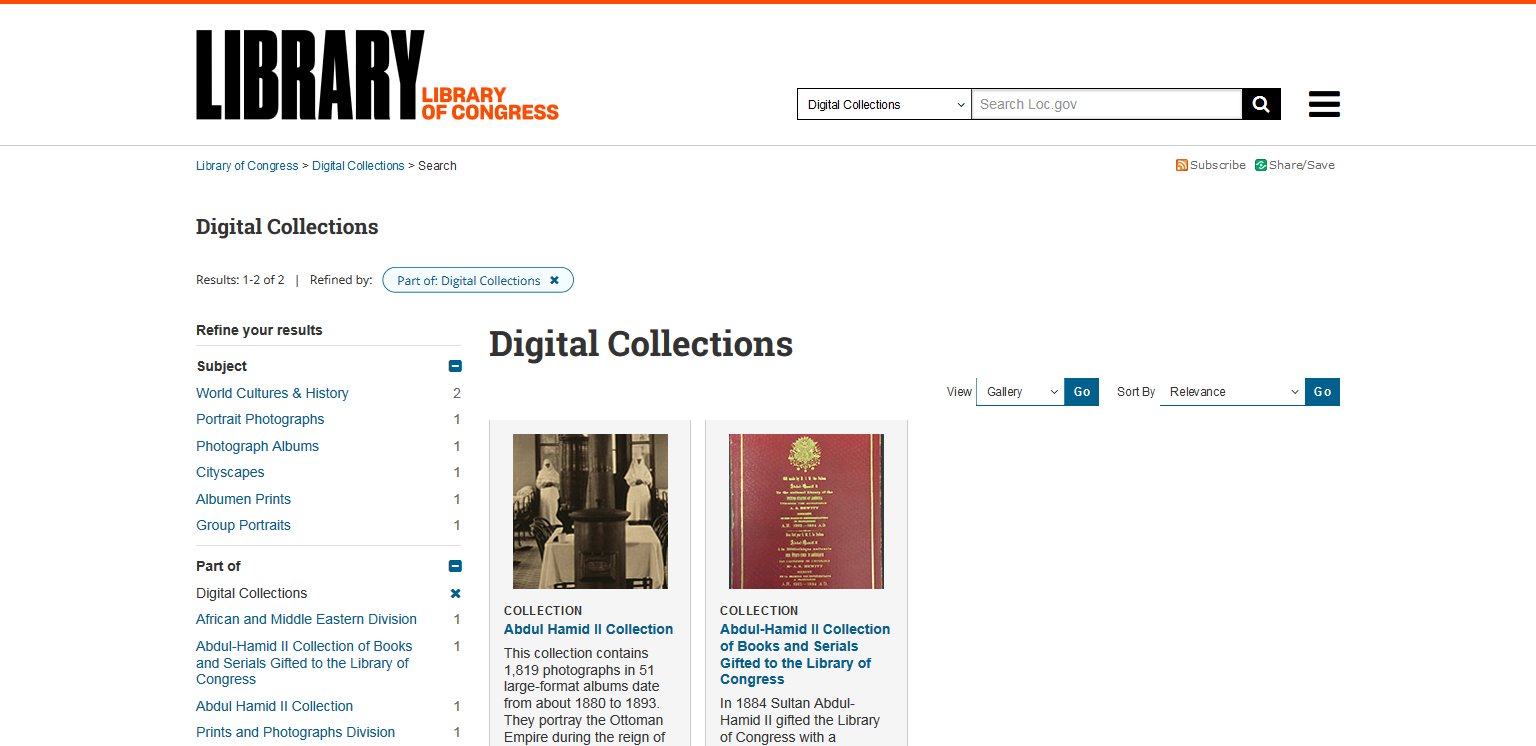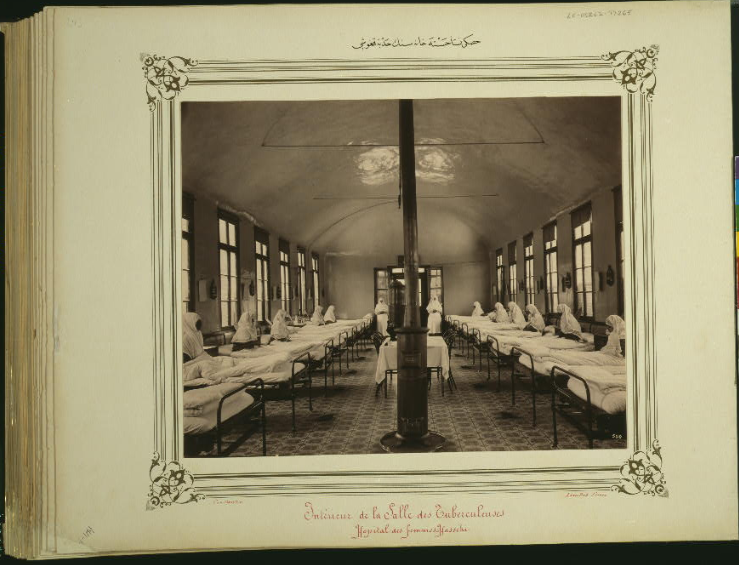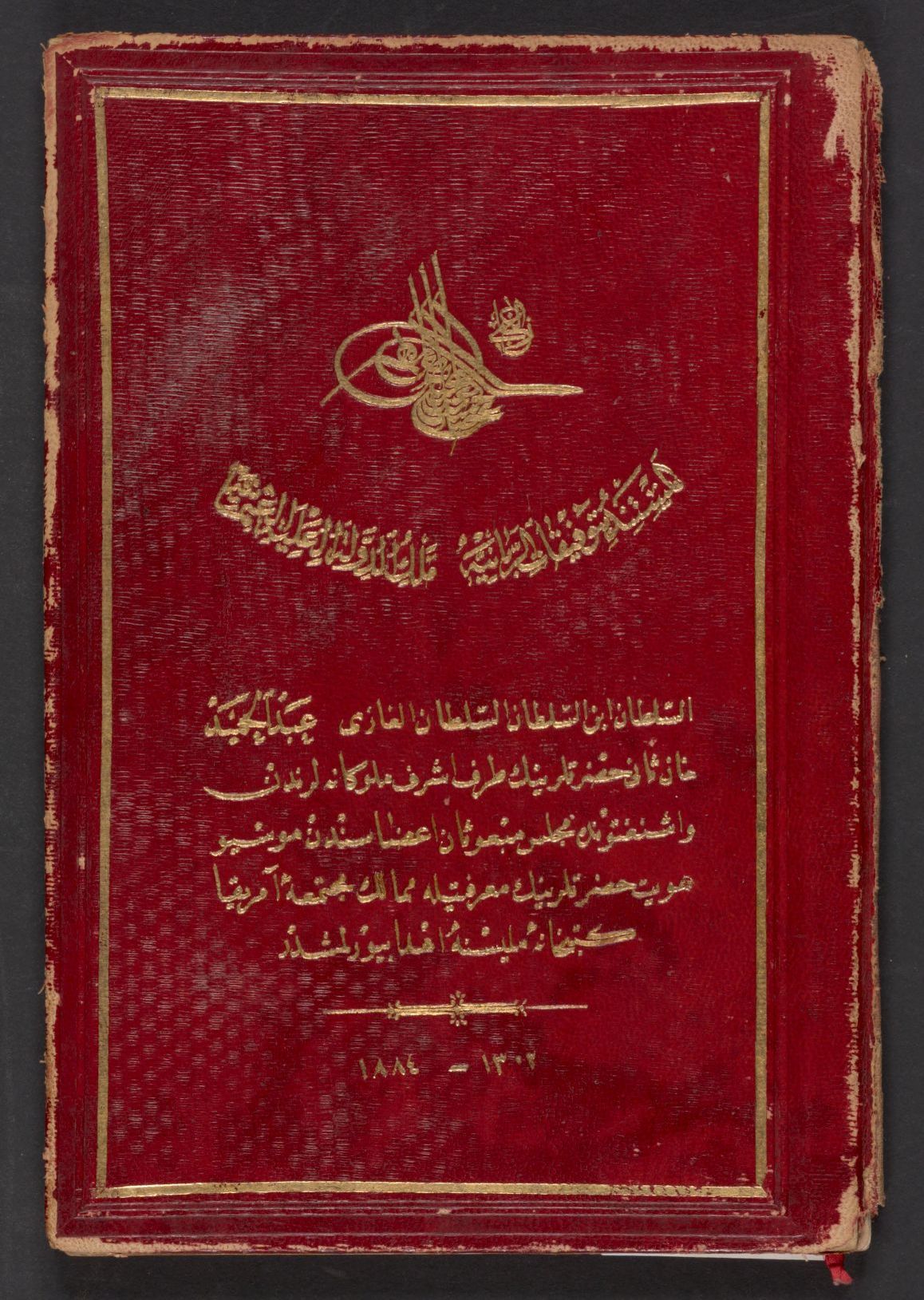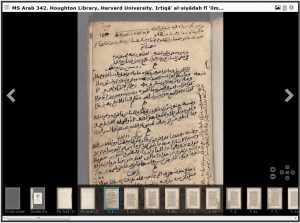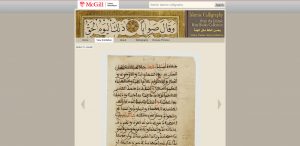Women’s Worlds in Qajar Iran (WWQI) is a digital archive of materials related to the lives of women during the Qajar era, inclusive of the period immediately preceding and following the dynastic period (1786 -1925). The goal of WWQI is to address a gap in scholarship and understanding of the lives of women during the Qajar era.
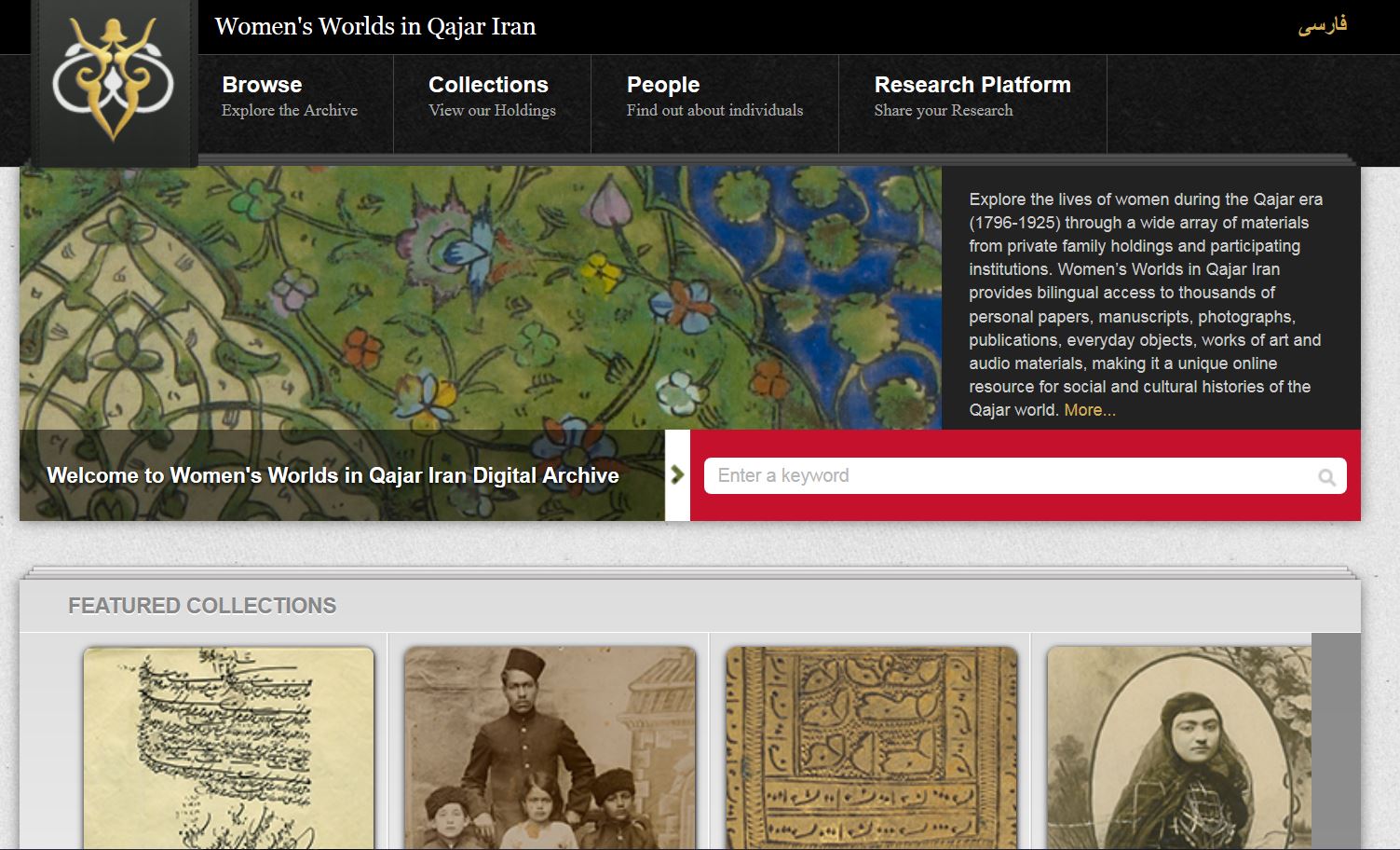
“Given the dearth of available primary-source materials related to women in the Qajar era, it is not surprising that, to date, the vast majority of Qajar social histories have focused almost exclusively on the struggles, achievements, and day-to-day realities of the men of that period. This is in part a matter of expediency; while men’s writing have been easily accessible in various national archives for decades (and many have in more recent years been published in edited volumes), most women’s writings, photographs, and other personal papers have to date remained sequestered in private family hands.”
WWQI aims to open up the documented social and cultural histories of Qajar women, thus allowing for the examinations of broader patterns of life during this era.
The materials included in the archive are not only those contained in private archives and manuscripts but also published materials from the Middle Eastern Collection in Widener Library and other institutions. They consist of:
- Writings: letters, prose, poetry, travel writings, essays, periodicals, and diaries
- Legal documents: wedding contracts, dowry documents, settlements, endowments, powers of attorney, wills, sales, and other financial contracts
- Artworks: calligraphy, painting, embroidery, weaving, other handicrafts, music, and film
- Photographs
- Everyday objects
- Oral histories
You could begin your search either by clicking on “Collections” or on “Browse”. All roads tend to lead to the search engine, where you can refine your search with keywords and filter selection.
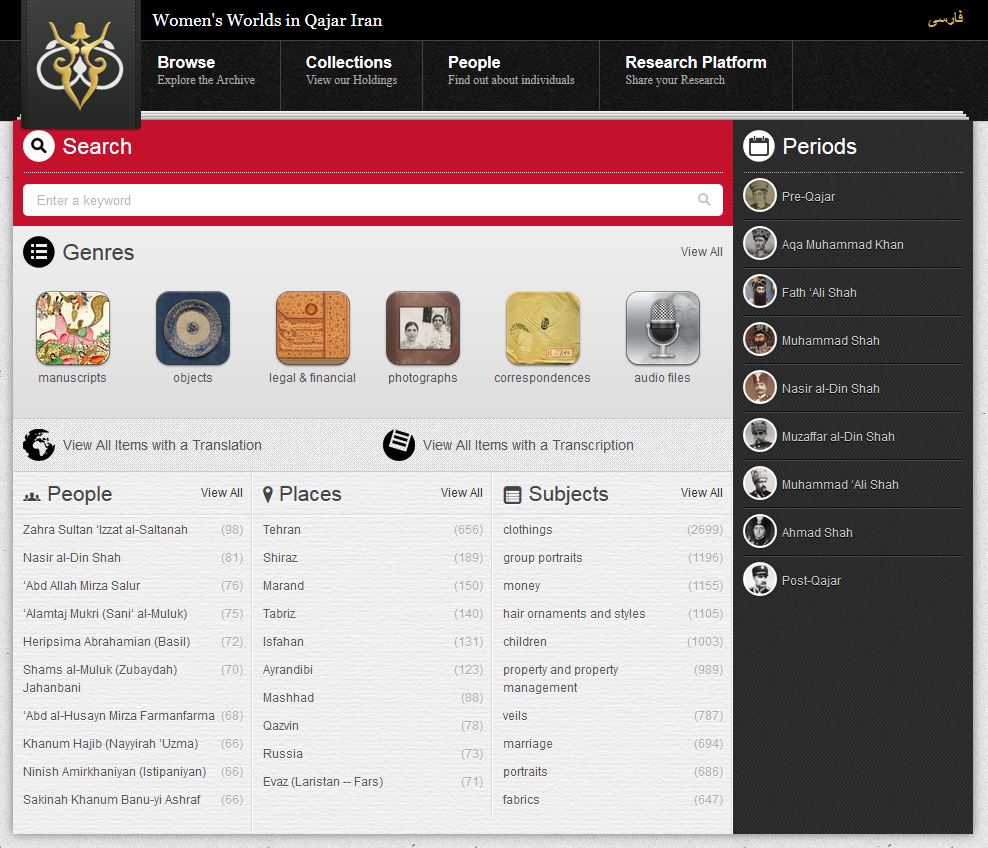
The website uses Elastic Search full text search engine which supports both English and Persian language-specific searches. While the results should be consistent, the results may vary slightly in terms of relevancy ranking.

The website also includes a research platform which put students and scholars in collaborative conversations, and generate innovative scholarship on the cultural history of the Qajar period focused on lives of women and issues of gender and sexuality.
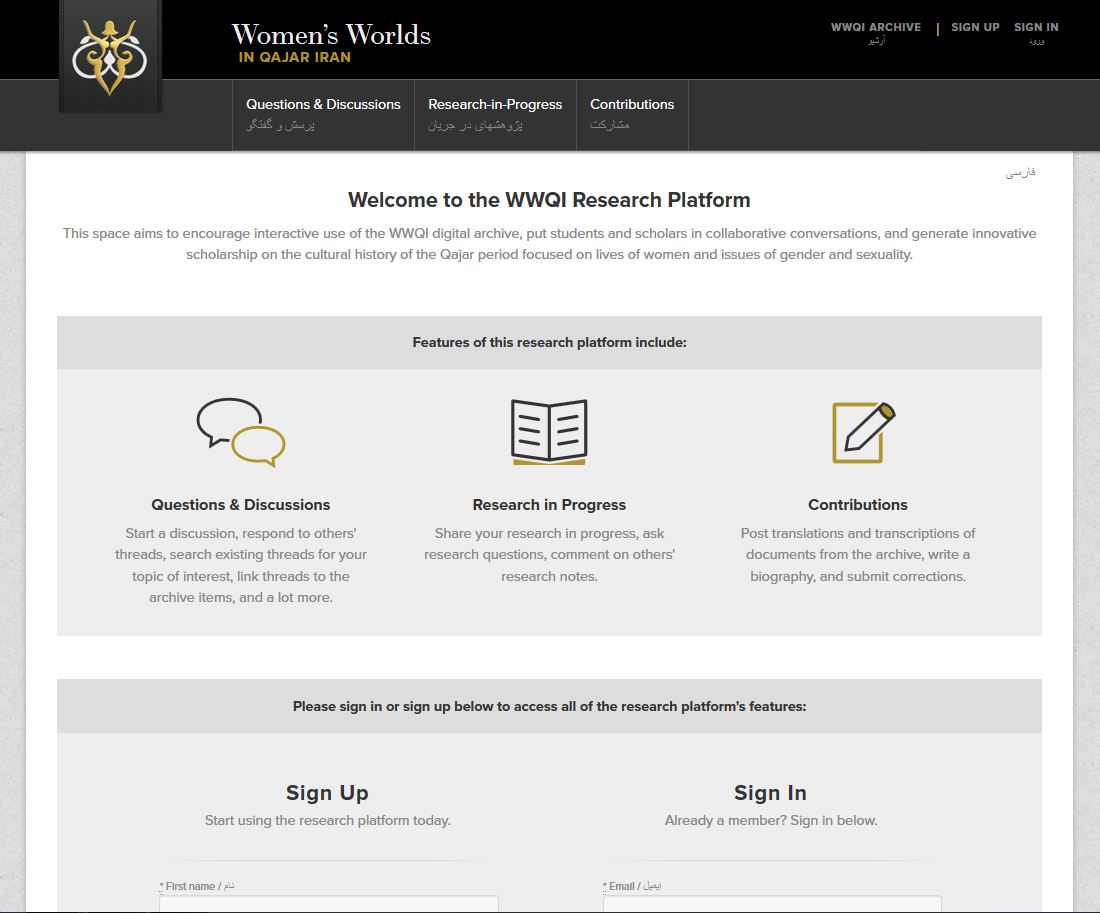
To learn more about how the Archive generates the digital holdings, see the documentary essay by Nicole Legnani, Commissioned by the Office of the Digital Arts and Humanities at Harvard University.
The Harvard University Library (HUL) central infrastructure accommodates all image, text, and audio materials collected for this archive. All WWQI materials can be accessed through the following Harvard University Library catalogues as well: Visual Information Access (VIA) system and HOLLIS Catalog.


